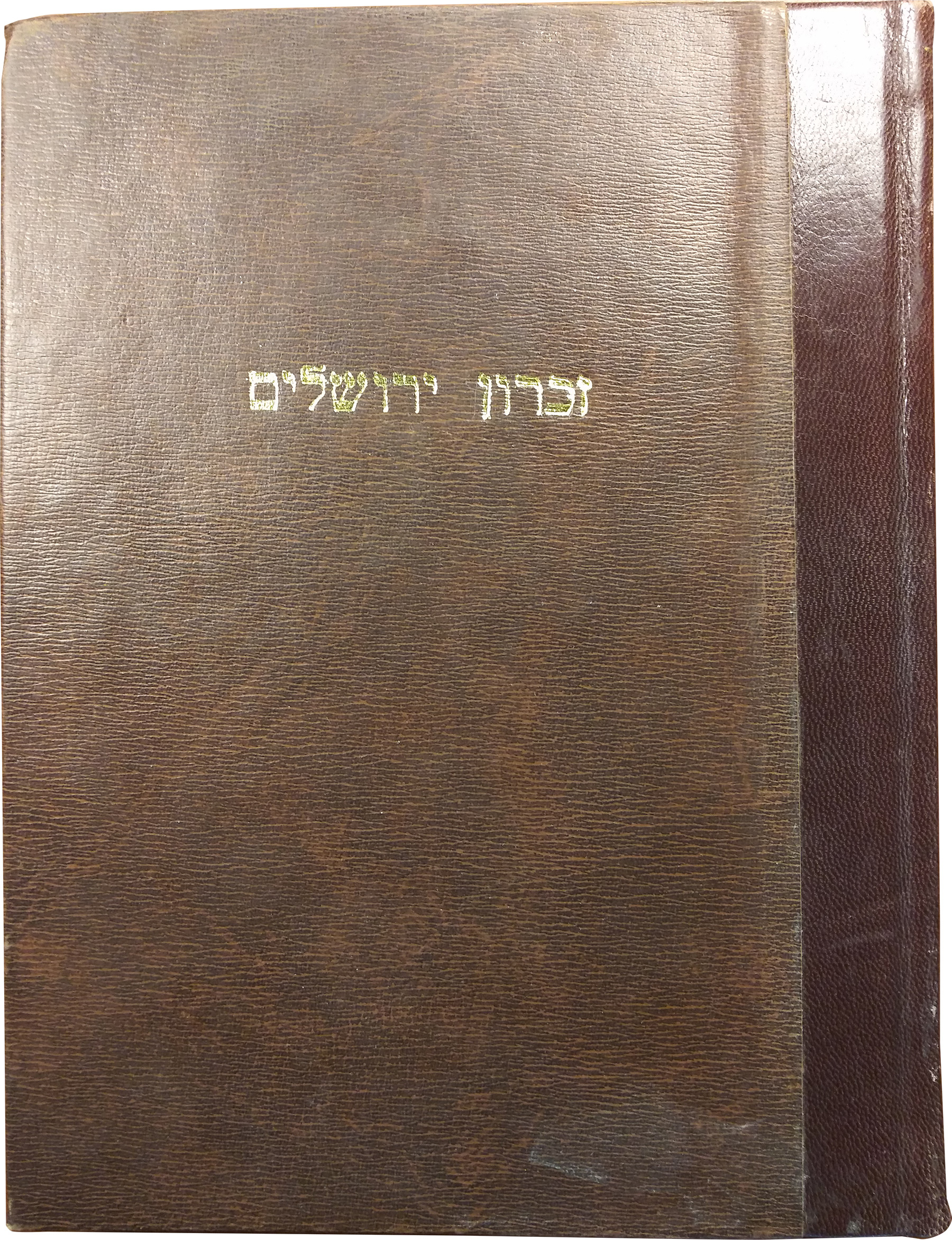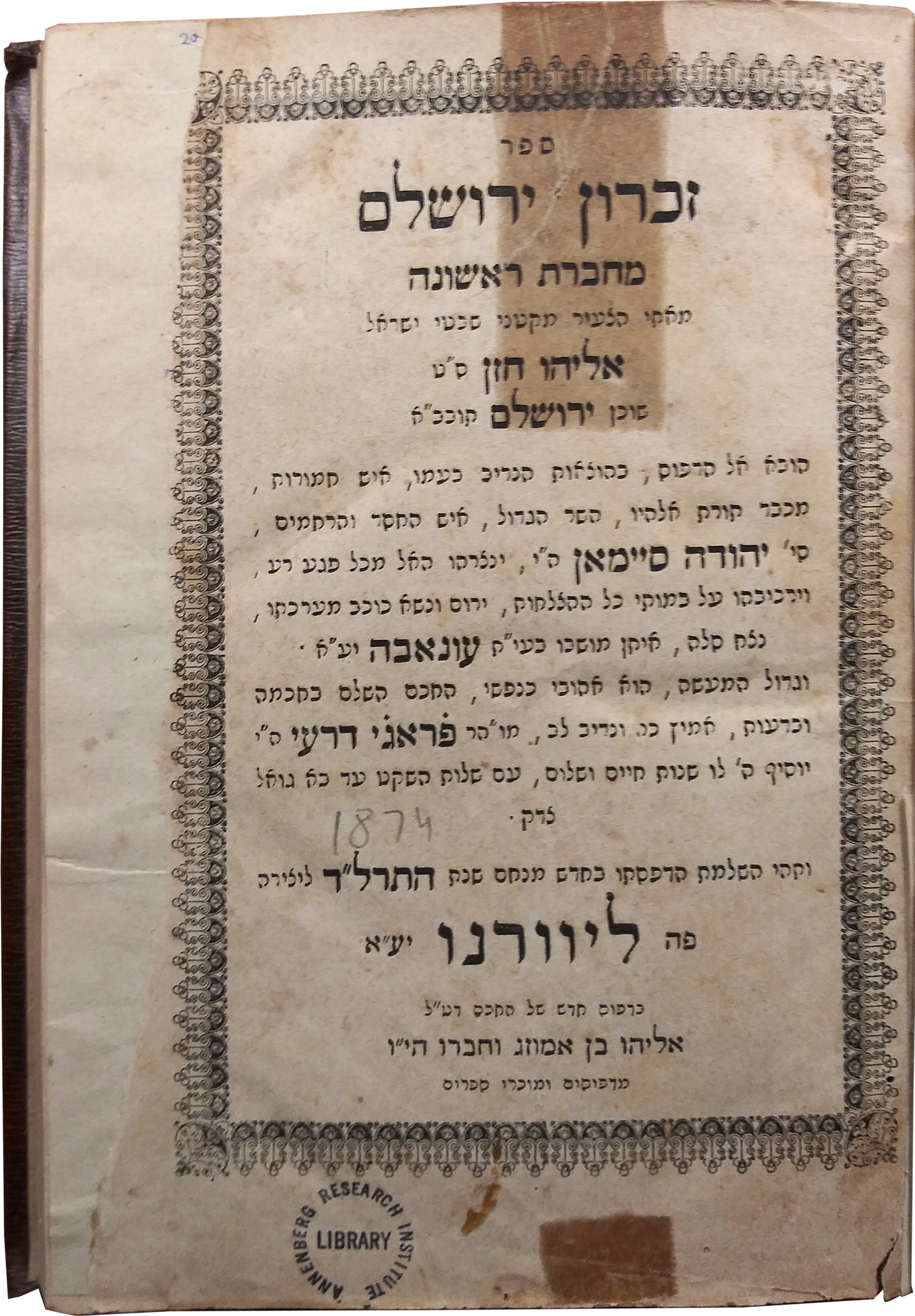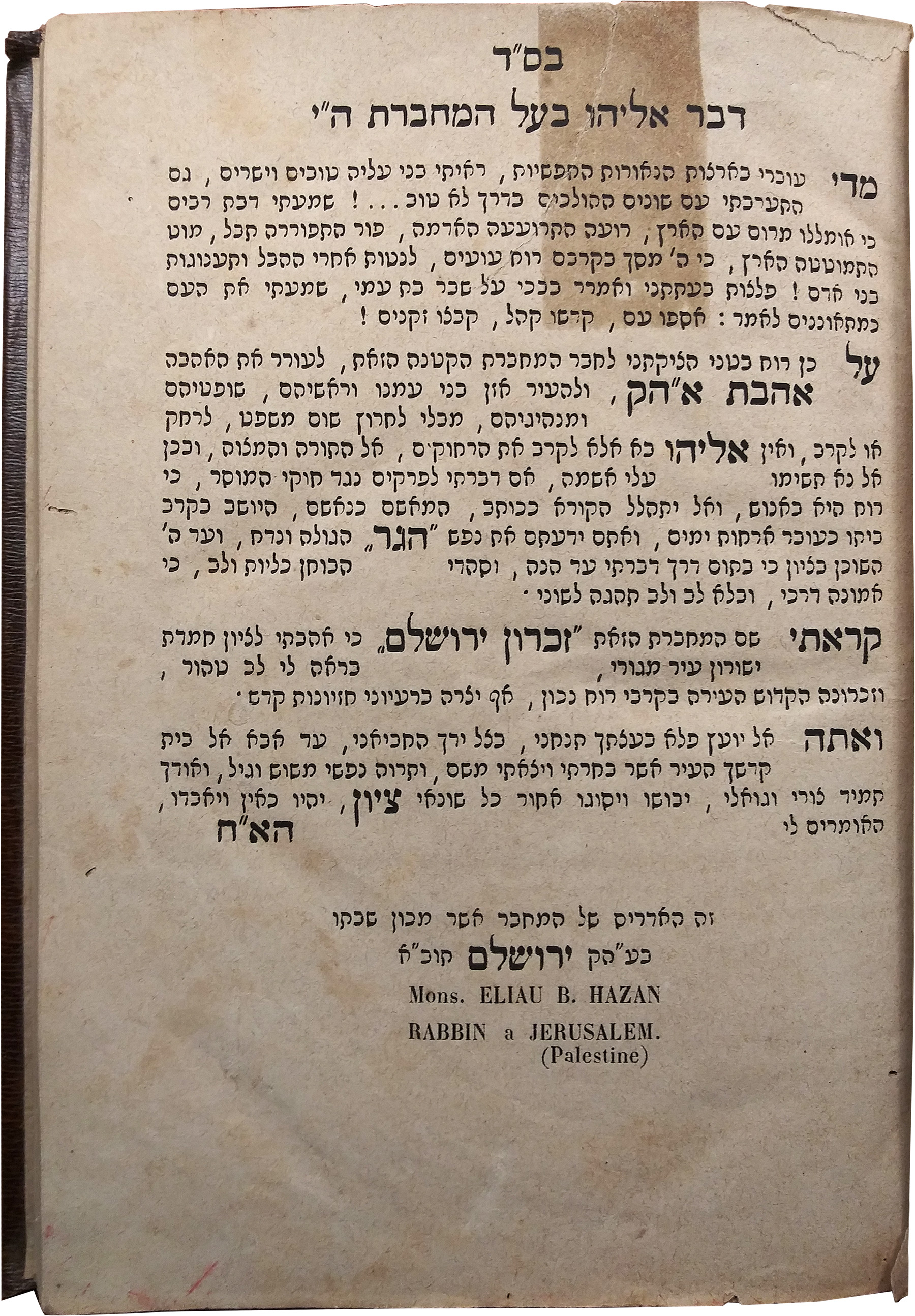Zikhron Yerushalayim is a play written by rabbi Eliyahu Bekhor Hazan in 1874. Hazan, who was born in Izmir in 1845, was raised and educated in Eretz-Yisrael/Ottoman Palestine, and in the 1870s was sent as a ShaDaR to Algeria, Tunisia, and Tripoli. When he was offered a position in Tripoli, he asked to travel briefly to Jerusalem to make some final arrangements. On his way, he stopped in Livorno, Italy, and printed his first book at the printing house of the famous mekubal Eliyahu Benamozegh. This was his only known work of prose (although he did publish short reports in Hebrew newspapers). Later, in 1888, he became the rabbi of Alexandria, where he served until his death, and published a long line of halakhic texts, the most famous of which is Ta'alumot Lev.
Structured as a symposium, Zikhron Yerushalayim brings a polyphony of perspectives and opinions among the Jews in Tunis, out of which stems the need for a “pan-Jewish” convention, as eventually takes place in the second part of the text. This imaginary convention gathers representatives from all Jewish factions and diasporas (an Ashkenazi, an Italian, a “Talmudic”, etc.) in an attempt to settle timely halakhic, philosophical, and cultural concerns of the Jewish people. The opening page (in the third photo) reveals the author’s implicit prophetic position as a resident of the Holy land, who also traveled through the enlightened countries, and can thus acknowledge the crisis of the Jewish people, formulated in the biblical words: “The earth is violently broken, the earth is split open, the earth is shaken exceedingly” (Isaiah 24:19).


